How will these resources help you?
When people picture deserts they often think of rolling dunes and nomadic people. However, delving deeper reveals a complex and dynamic biome, which can be both used and damaged by people. These resources take the reader from a wider overview of deserts, through a consideration of their importance as ecosystems, to a focus on their use for farming. Nomadic groups of people have used the desert as a home and source of food throughout history, but deserts are now also home to modern developments such as aquaponic farms which provide fish and crops to improve food security. However, unsustainable use of desert for farming can bring disaster to both the ecosystem and the farmers. Use of marginal land for farming in Australia could be argued to be an example of this. Should we farm the desert? Perhaps before we answer we need to consider which deserts are being farmed and how the farming is being carried out.
How people use deserts and why this is important
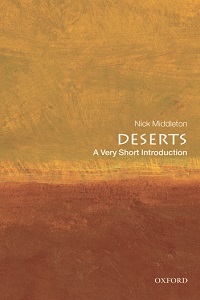
Deserts: A Very Short Introduction
by Nick Middleton, published by Oxford University Press, (2009), 9780199564309
This is just one of a series of ‘very short introduction’ books from OUP (looking across the range of titles is highly recommended). Middleton is an excellent communicator as well as an expert on desertification, making this book hugely readable and informative. Chapter 4 explores desert peoples, including hunter-gathers, pastoralists, and farmers, considering how they use the land, the rights they have and what the future holds for them. Chapter 5 looks at ‘Desert connections’ including how desert ecosystems, resources, ideas, and lifestyles are interrelated with the rest of the world. This book is an ideal starting point for anyone interested in how the desert is farmed and the impact this has.
What impact does human activity have on deserts?
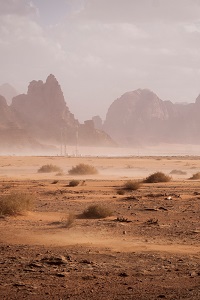
Deserts as Ecosystems and Why They Need Protecting
by Matthew Mason, published by EnvironmentalScience.org, (2018)
Starting with an overview of deserts as ecosystems, this resource explores how deserts have been used and conserved through history and introduces the science of eremology (the study of the desert biome). The desert is explored as a resource for farming and much more, followed by an overview of seven deserts on seven continents. Interesting questions are asked in the final section, on future challenges, such as whether species should be introduced to desert environments when there are conflicting views about indigeneity. The long list of sources at the end of the article provides useful reading for anyone wanting to delve further into the issues discussed. It is an accessible and interesting resource which could be used by both teachers and students to develop their understanding of the desert ecosystem and the impact people have on it through their actions.
Can new ideas and technology improve farming in the desert?
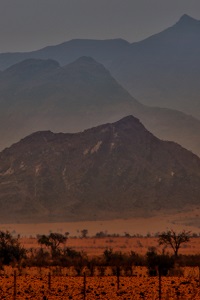
Aquaponics for Improved Food Security in Africa: A Review
by Kwasi Adu Obirikorang, Wonder Sekey, Benjamin Apraku Gyampoh, George Ashiagbor and Winston Asante, published by Frontiers in Sustainable Food Systems, (2021)
Aquaponics is the use of water in a controlled way to both farm fish and irrigate crops (often without soil). Obirikorang et al explore this approach in the context of improving food security in different parts of Africa, including its potential use in desert areas in countries including Egypt and Namibia. The approach provides fish protein as well as crops (such as leafy greens) in areas that may be suffering food insecurity, using 90% less water than traditional farming as well as creating jobs and income. Areas facing water insecurity, including Zimbabwe, are exploring increased use of aquaponics powered by solar energy. However, Obirikorang identifies that development of this technology has not been as rapid in some areas due to a lack of technical expertise and the initial high start-up cost. The conclusion recognises the need to develop low-cost systems that can easily be developed across Africa. The article gives a good insight into one particular approach to farming in the desert, showing how food security can be improved in a sustainable way.
When should we stop farming a desert?
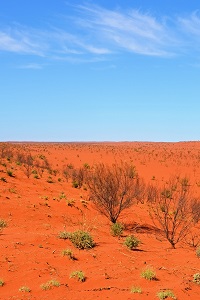
The challenge of ‘farming the desert’ in Australia
by Kathy Marks, published by BBC News, (2018)
Settlers in Australia brought European farming techniques to the vast, dry country, which is now well known for its extensive farms and cattle ranches. This article tackles the difficult issue of whether farmers should take a step back in areas which are becoming drier and increasingly marginal as farms. When drought strikes, the government provides support for farmers, but some are questioning whether this is sustainable as droughts become increasingly frequent and severe. This article would be ideal to explore in the classroom as a decision-making exercise, with students making recommendations for future farming in Australia. This could be linked with the previous paper on the benefits of aquaponics, challenging students to think of sustainable ways forward.
Audiovisual clip
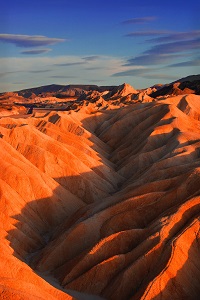
Planet Earth - Life in Death Valley
published by BBC, (2006)
A visual aid to understanding how life can grow in the desert.
Further materials
Dark Emu by Bruce Pascoe, published by Magabala Books, (2014), 9781921248016
Find this book
Entrepreneurs help farmers hold back Somaliland’s desert by Andres Schipani, published by The Financial Times, (2021)
Read this article
Dark Emu: Aboriginal Australia and the birth of agriculture by Bruce Pascoe, published by Scribe UK, (2018), 9781911344780
Find this book
Desert dreams by Vince McDonagh, published by Fish Farmer Magazine, (2022)
Read this article
Blue corn and melons: meet the seed keepers reviving ancient, resilient crops by Samuel Gilbert, published by The Guardian, (2022)
Read this article
Catherine Owen is Head of Geography at The King Alfred School an Academy, a CGeog and a Geographical Association Consultant. She writes and presents for OUP, Hodder Geography, Tutor2U and more.
Text © Catherine Owen, 2022-2023
Text © Catherine Owen, 2022-2023



